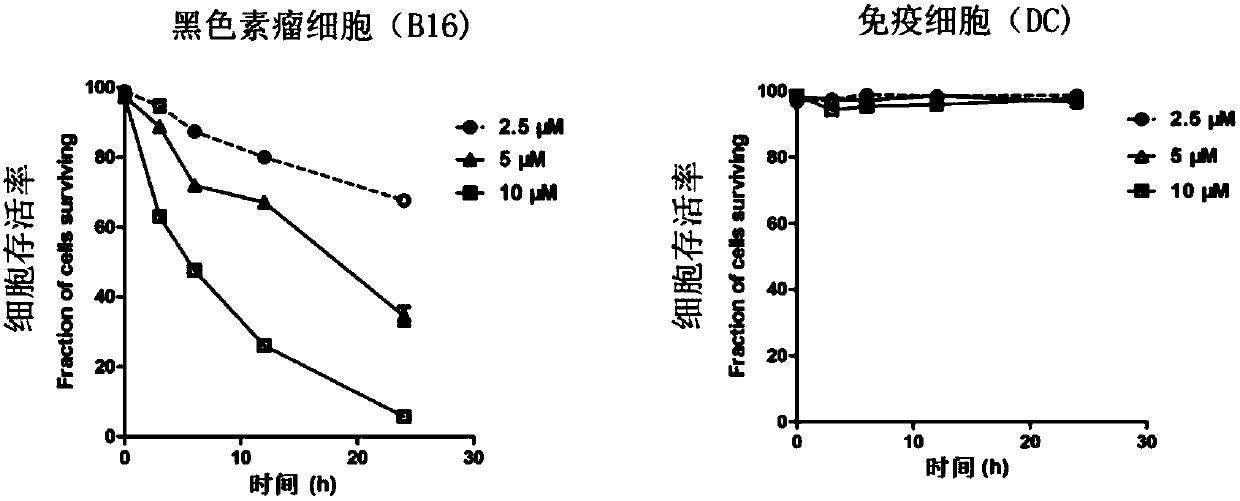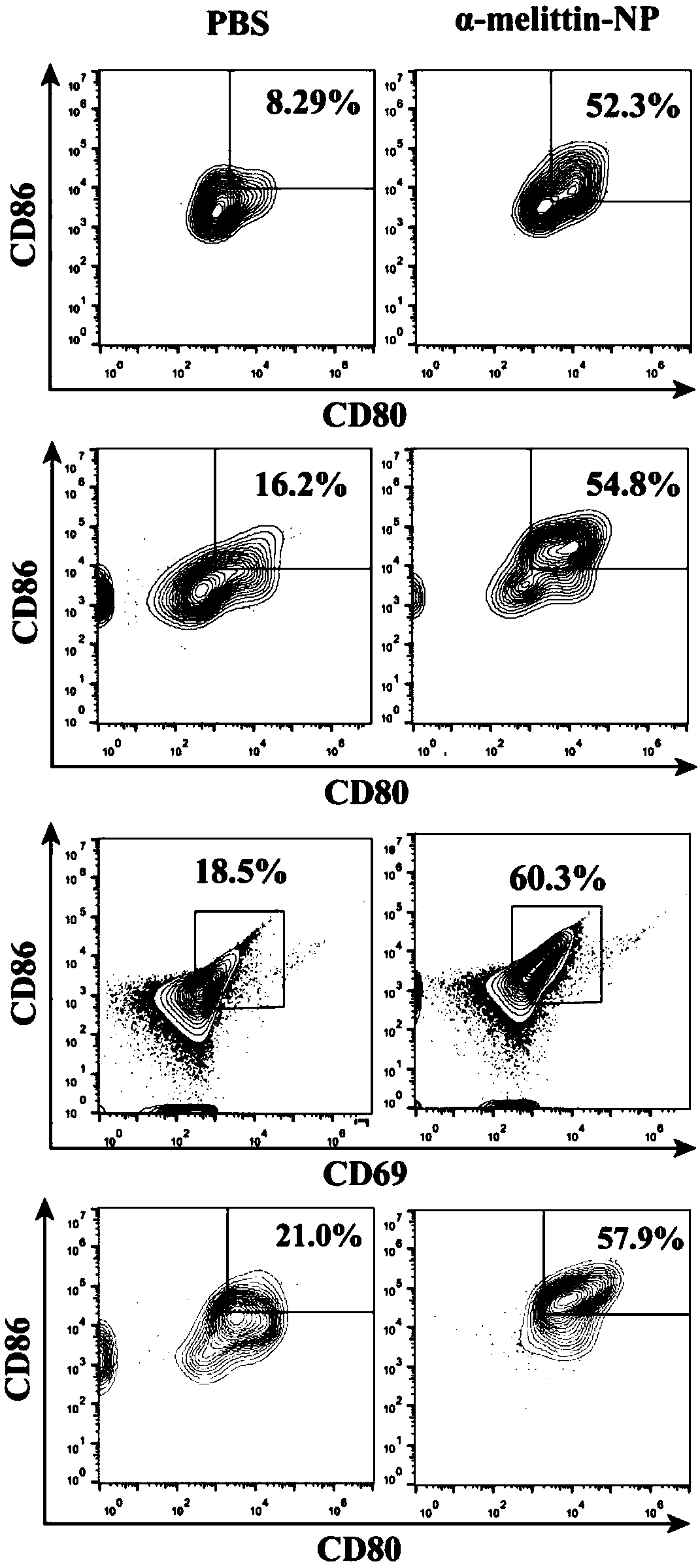Application of bee venom lipid nanoparticles
A lipid nanoparticle and nanoparticle technology, applied in the fields of biological science and drug carriers, can solve problems such as aggravating the patient's condition, cytotoxicity, and damage to the body's immune system, and achieve the effects of prolonging the survival rate and inhibiting growth.
- Summary
- Abstract
- Description
- Claims
- Application Information
AI Technical Summary
Problems solved by technology
Method used
Image
Examples
Embodiment 1
[0040] Embodiment 1: the application of bee venom lipid nanoparticles
[0041] An embodiment of the present invention provides an application of bee venom lipid nanoparticles, which are composed of bee venom hybrid polypeptides combined with phospholipids and cholesterol lipids. The melittin hybrid polypeptide is composed of α-helical polypeptide, connecting sequence and melittin in series in the form of covalent bonds. The amino acid sequence of the α-helical polypeptide is DWFKAFYDKVAEKFKEAF, and the amino acid sequence of the α-helical polypeptide is shown in SEQ ID NO.1 in the sequence listing. The amino acid sequence of the linker sequence is GSG. The phospholipid is dimyristoylphosphatidylcholine (DMPC, ie 1,2-dimyristoyl-sn-glycero-3-phosphocholine). The molar ratio of bee venom hybrid polypeptide, phospholipid and cholesteryl lipid is 0.19:3:0.2.
[0042] The bee venom lipid nanoparticles are used to prepare immune activation and anticancer agents, which target anti...
Embodiment 2
[0047] Embodiment 2: the preparation method of bee venom lipid nanoparticles
[0048] The embodiment of the present invention provides a preparation method of bee venom lipid nanoparticles, comprising the following steps:
[0049] S1. Mix 3 μmol DMPC (1,2-dimyristoyl-sn-glycero-3-phosphocholine) and 0.2 μmol cholesteryl ester (Cholesteryl oleate, C.O for short) in chloroform fully in a glass test tube, and seal the test tube mouth with a parafilm ;
[0050] S2, dry the chloroform in the test tube in a stable nitrogen flow, so that the mixture in step S1 can form a thin film at the bottom of the test tube; put the test tube in a vacuum desiccator and vacuum dry for 1 h;
[0051] S3, add 1 mL of phosphate buffer solution to the test tube, fill it with nitrogen gas and seal it, and use a vortex shaker to fully resuspend the drug film at the bottom of the test tube to form a uniform milky white suspension; ultrasonicate the test tube at 48°C for 1 hour;
[0052] S4, using a syri...
Embodiment 3
[0054] Example 3: Comparison of the Killing Effects of Bee Venom Lipid Nanoparticles on Tumor Cells and Immune Cells
[0055] The killing effect of the melittin lipid nanoparticles prepared in Example 2 on tumor cells and immune cells was compared, and the immune cells were dendritic cells (DC) as an example.
[0056] figure 1 The results showed that after incubation of 10 μM lipid nanoparticles with tumor cells for 24 hours, the lethality almost reached 100%, but almost no toxicity to immune cells (dendritic cells). This shows that the meli venom lipid nanoparticles have no toxic effect on the antigen-presenting cells in the tumor microenvironment and even in the lymph nodes, on the contrary, they have a strong killing effect on tumor cells.
[0057] Targeting effect of meli venom lipid nanoparticles on lymph nodes, cf. figure 2 . Through fluorescence imaging, it was found that the lipid nanoparticles of bee venom can reach the draining lymph nodes smoothly, reaching the ...
PUM
 Login to View More
Login to View More Abstract
Description
Claims
Application Information
 Login to View More
Login to View More - R&D
- Intellectual Property
- Life Sciences
- Materials
- Tech Scout
- Unparalleled Data Quality
- Higher Quality Content
- 60% Fewer Hallucinations
Browse by: Latest US Patents, China's latest patents, Technical Efficacy Thesaurus, Application Domain, Technology Topic, Popular Technical Reports.
© 2025 PatSnap. All rights reserved.Legal|Privacy policy|Modern Slavery Act Transparency Statement|Sitemap|About US| Contact US: help@patsnap.com



